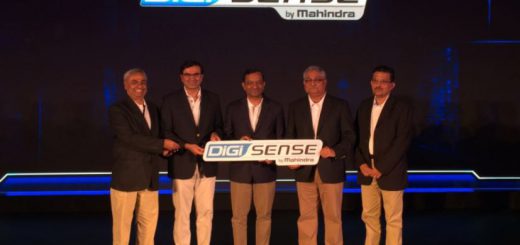Govt Implement GPS in logistics industry
In other countries, GPS devices have been used for the last two decades by the supply chain industry to improve operational efficiencies. India has been a slow follower. But the govt is finally trying hard to play catch-up, & it is imperative that this endeavour is successful. Ensuring success, however, is very challenging. A change in perspective could make all the difference.
Since the Indian logistics industry is deeply fragmented, accounts for 14% of India’s GDP, involves countless government and quasi-government agencies and councils, and employs millions of people, it is only right that the government focuses on trying to modernise operational processes with a view to reducing costs while enhancing transparency, speed and other efficiencies. One such initiative, enshrined in the Automotive Industry Standard (AIS) 140 circular, mandates the use of global positioning system (GPS) equipment in both original equipment manufacturer (OEM) and after-market commercial and public utility vehicles, with a view to enhancing operational control that could result in plugging loopholes related to delays, deviations, pilferage and adulteration.
 In other countries, GPS devices have been used for the last two decades by the supply chain industry to improve operational efficiencies. India has been a slow follower. But the government is finally trying hard to play catch-up, and it is imperative that this endeavour is successful. Ensuring success, however, is very challenging. And a change in perspective could make all the difference.
In other countries, GPS devices have been used for the last two decades by the supply chain industry to improve operational efficiencies. India has been a slow follower. But the government is finally trying hard to play catch-up, and it is imperative that this endeavour is successful. Ensuring success, however, is very challenging. And a change in perspective could make all the difference.
This change begins with both suppliers and users admitting that GPS is not a product, but a service. Too often, GPS traders, in their bid to clear inventory, succeed in selling GPS devices to corporations who want an economical, technical alternative to existing labourintensive monitoring solutions. When these devices fail because they are neither configured to provide actionable inputs, nor customised to meet specific needs, they are abandoned as yet another failed technology project.
The first issue arises from the lack of control over firmware (devicelevel software) that often still resides with foreign manufacturers. The second because the simplest solution is often the cause for vested interests. And though the government has somewhat taken care of the former issue by mandating that all devices be made in India for the purpose of AIS 140 compliance, the second issue has now reached a point where it may seriously impact project credibility.
How? The transport ministry has stated that each vehicle must be uniquely trackable. Hence, one unique truck, one unique device. But instead of hard-tagging the unique International Mobile Equipment Identity (IMEI) number of the embedded GPS device to the vehicle registration number, the mandate demands that the vehicle registration number be hard-tagged to a dual profile-embedded SIM (subscriber identification module) card.
As a reminder, a GPS device is dependent on a GPS chip, which produces locational data, and a general packet radio service (GPRS) SIM card, which transfers this data. Normally, these M2M (machine-tomachine, as opposed to consumerto-consumer) SIM cards are procured from mobile network operators (MNOs) — BSNL, Airtel, Vodafone, etc — on whom GPS service providers and end-users rely for network availability. A user profile with a unique mobile number is burned on to this SIM for the purpose of tracking the device.
In the case of dual profile-embedded SIMs mandated by AIS 140, however, two mobile numbers are pre-burned on to the embedded chip, so that if one MNO’s network falls below a specified strength, the unit will switch to the other MNO’s network to transfer data. MNO management and data transfer are dependent on a third-party integrator, who is neither an MNO nor aGPS device manufacturer.
The first problem here is that the third-party integrator — as a component vendor — will not be held accountable in case of SIM, and, therefore, device failure. Device providers and owners will be held responsible.
So, dual profile-embedded SIMs will ensure profitable business continuity for integrators — the onetime cost of the SIM and the first-year subscription fees have to be paid upfront — without imposing any penalties for performance failure. Second, and significantly, it takes away the customer right to switch MNO in case of performance failure. This goes against the fundamental tenet of choice, which governments, globally, have promoted in the telecom sector.
The current initiative could create chaos in the marketplace. A similar mandate in an eastern state in 2017 failed miserably. Today, both endusers and vehicle owners are up in arms, as they are often penalised for the performance of a device they do not control.
On the other hand, this enterprise can definitely be a game-changer if MNOs and GPS manufacturers agree on SIM standards to meet the end goals of GoI. This could even be achieved through a single-profile embedded SIM. Government agencies should work closely with Indian GPS manufacturers and Indian GPS service integrators who have successfully implemented such projects earlier, to ensure that the AIS 140 initiative results in a digitally successful and savvy logistics sector.
Otherwise, this will be another noble intention that fell victim to vested interests, poor understanding and improper implementation.
Source: http://bit.ly/2rkmsf8



Recent Comments